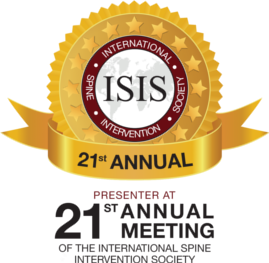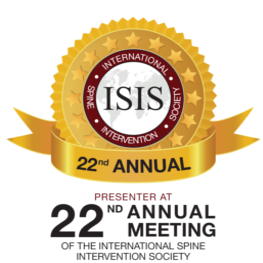Spinal fusion is a surgical treatment for fractured or injured vertebrae. It can also help with a weak or unstable spine. A broken, injured, or unstable spine or degenerative conditions in adults are among the leading causes of back pain. Spinal fusion aims to stabilize the spine to reduce pain and other severe symptoms. The surgeon mainly joins the vertebral bones to minimize the movement that could cause instability and pain. This treatment can be done at any level of your spine. However, it takes a long time to recover from spine surgery.
Your surgeon will likely recommend rest and limited activity immediately after surgery, during the first few weeks after treatment, for a smooth recovery. Then, you can incorporate minimal movement in your daily activities to recover your mobility and strengthen your back. A chiropractor is highly recommended in this period to help manage your pain, improve nerve communication and mobility, and reduce the appearance of your surgical scar. Talk to a skilled orthopedic spine surgeon for more information about your treatment and recovery.
Spinal Fusion
Back pain is a prevalent issue that mainly affects adults. It affects mobility, limiting your ability to perform daily activities, including basic tasks like walking around, standing from a sitting position, or getting up from bed. Back pain starts mildly and becomes severe if not treated. Although you can manage it with pain medication and other home remedies like resting, ice packs, and massage, you need treatment for the underlying cause to manage the pain once and for good. Doctors recommend various treatments for back pain, including pain medication and physical therapy. However, your doctor can recommend surgery if this does not produce the desired outcome.
Since there are so many underlying causes of back pain, spine surgeons have various treatments they recommend according to your exact needs. Spinal fusion is one of the common treatments for a back-related issue that causes excruciating back pain. If you sustain a back injury, a strain, or a weakness in your back that causes instability in the vertebral bones, you will likely experience severe back pain that you cannot manage with pain medication and physical therapy alone. You need a treatment that will fix the issue in your back to stop the pain and restore your health and mobility.
Spinal fusion mainly helps with movement. It joins two or more vertebral bones to reduce movement and instability in the back, causing pain. Once the bones are fused, they become more stable, reducing movement as you engage in your daily activities. This treatment mainly stabilizes the spine, but it can also correct spinal deformities contributing to your pain. Although it takes some time to recover from the operation entirely, the pain will be gone once you have attained a full recovery. You can now resume complete activities and live a healthier life after that.
Specifically, the surgeon uses bone grafts or metal plates between the unstable vertebrae to reduce movement and friction between them. If metal plates are used, the surgeon will screw them in place. Sometimes they use rods to hold the problematic bones together as they fuse. In addition to treating spinal instability caused by fractures, spondylolisthesis, or degenerative disc disease, spinal fusion also treats such deformities as scoliosis or kyphosis. Back pain is relieved once the unstable bones are fused and motion is eliminated. Your risk of arthritis and nerve compression is also reduced significantly.
Spine surgeons also use spinal fusion to treat other conditions like spinal stenosis, which occurs when the spinal canal narrows, and tumors that affect the spine.
Treatment Process and Recovery
Before undergoing spinal fusion, you need a detailed medical evaluation to determine the cause of your back pain and the location of the unstable or injured vertebral bones. In addition to asking about your symptoms and reviewing your treatment history, your doctor can order imaging tests like CT scans, X-rays, and MRIs of your back and a nerve conduction study to assess the condition of your spine and identify the bones that require fusion. Once your doctor determines that you need a surgeon to treat the underlying condition and manage your symptoms, including pain, they will discuss the treatment procedure.
This includes explaining what to expect during and after treatment, the risk factors, benefits, and possible outcomes. The doctor will also determine the right surgical approach to attain the expected result. The doctor can request a preoperative test, like an EKG and blood work, if necessary. They can also consult other specialists, like anesthesiologists, to make an informed decision regarding your treatment. Additionally, a bone density test could be required to determine the quality of your bone before treatment.
Once you are ready for treatment, an anesthesiologist will administer anesthesia to keep you relaxed and free from pain during treatment. They will then access your spine from the back, front, or side, depending on the exact location of the injured or unstable bones. Your surgeon can use the traditional open-spine surgery or a minimally invasive approach, depending on your preference. A minimally invasive approach reduces bleeding, tissue damage, and other complications that could prolong your recovery.
If your pain was due to a damaged disc, the doctor will remove it to relieve the pressure on your spinal nerves. The surgeon can also use a bone graft material between the bones requiring fusion to encourage fusion. Lastly, they will use mental implants like rods, screws, or plates to keep the bones and bone graft in place while they fuse.
Spinal fusion is a significant back surgery, especially if you undergo an open spine surgery. Thus, your recovery could take time. Your doctor will keep you in the hospital for the recommended period until you are well enough to continue recovering at home. Some people recover for up to six weeks of rest after the surgery. You could experience pain, exhaustion, and difficulties moving around. After a few weeks, you can start moving around as you perform simple tasks around you. However, you will still not be well enough to undertake a strenuous activity.
Once your body heals, which is expected after about six weeks, you can incorporate therapy into your recovery. This could be the right time to see a chiropractor to discuss how they can help your recovery. Remember that severe back pain can interfere with some of your bodily activities, like mobility. You need therapy as part of your recovery to recover such functions. Chiropractic treatment is highly recommended, as it can help strengthen your muscles, especially those in your back. Once your surgeon clears it, you can start the sessions to fully recover your mobility and resume your daily tasks sooner rather than later.
How Chiropractic Treatment Can Help after Spinal Fusion
Chiropractic treatment focuses on treating the musculoskeletal system, mainly the spine. It is a hands-on, drug-free, and non-invasive treatment that improves the function of your entire body. It alleviates pain by restoring proper movement of muscles and joints. Chiropractic treatment is offered by trained specialists who use various techniques on various body parts to achieve the desired results. For example, they use spinal manipulation or adjustment to address spine-related issues.
While spinal fusion addresses the underlying cause of your back pain, it takes your body some time to heal. If your back pain has impacted your mobility, the prolonged healing period can worsen it. A chiropractor can help you improve mobility and alleviate pain so you can heal faster and more effectively after surgical treatment. However, chiropractic treatment is recommended after your body heals. Most patients must wait 3 to 6 months after spinal fusion before beginning chiropractic treatment, depending on individual healing and surgeon approval.
Remember that it takes several months for your vertebrae to fuse after spinal fusion for it to be stabilized by a graft. Starting therapy soon after surgical treatment can mess with the back and interfere with the healing process. Once healing is complete, a chiropractor can help you continue progressing. The treatment is necessary to strengthen your back muscles for improved mobility and overall strength.
Chiropractors specialize in various areas, including recovery, especially after receiving treatment for specific back issues. They offer muscle rehabilitation that provides many benefits to recovering spinal surgery patients. Some benefits include traction treatment and adjustment to prevent compression after back surgery. Sometimes, they use electrical muscle stimulation to deal with inflammation and pain. The treatment offered during therapy depends on your needs and goals.
Here are various ways in which you can benefit from chiropractic treatment after spinal fusion:
Pain Reduction
Spinal surgery will likely result in pain, whether you undergo an open spine surgery or a minimally invasive surgery. Although the treatment aims at alleviating back pain caused by injured or unstable vertebral bones, you will experience pain until you heal from the surgery. It takes time to recover completely from back surgery. The length of your recovery period mainly depends on your body’s healing abilities. Some people heal faster than others, and others are more sensitive to pain.
Incorporating chiropractic treatment is one way to promote your recovery and reduce pain. You can experience significant relief from pain right after starting chiropractic treatment. This could be due to the non-rotational and gentle movements performed by the chiropractor to reduce pain and discomfort. You will also likely experience reduced joint pain after starting the treatment. Chiropractic treatment works gradually to relieve your pain, meaning that you will experience better results as you continue with the therapy.
Improved Mobility
Back pain can severely affect your mobility. The less you move after sustaining a back injury, the worse the pain becomes. You could recover mobility after spinal fusion, once the underlying issue is treated. However, this could take time, since you need to rest more after treatment for adequate recovery. Unfortunately, this affects your mobility further. Once your body heals, you could start moving your body to recover your mobility eventually. A chiropractor can help improve your mobility after recovering from spinal fusion.
Remember that chiropractic treatment specializes in muscles and skeletal areas. One of the most significant benefits of working with a chiropractor is a considerable improvement in your range of motion. They use special techniques to strengthen your muscles so you can eventually regain your mobility. Your muscles will likely feel uncomfortable and stiff after experiencing back pain and the prolonged recovery period after spinal fusion. Chiropractors use hands-on techniques to take care of that discomfort and alleviate stiffness so you can move better.
They will start the therapy by identifying areas of your body that feel stiff and uncomfortable. Then they will perform treatment targeting those areas. Once the muscles loosen up, you can move freely and perform some of your daily tasks.
Improved Neural Communication
Neural or nerve communication is essential because it allows your body to perform its functions as a coordinated whole. It enables you to feel, think, and take action. It is the critical process through which the nervous system transmits chemical information to the body to control everything the body performs, from simple reflexes to complex functions like thinking and acting.
Back pain can severely affect neural communication because it affects how the spinal cord and brain interact. Consequently, it can lead to chronic pain and impact your movement patterns. This disruption can affect your feelings and your body’s reaction to those feelings.
Luckily, this is one of the areas that chiropractors specialize in. As you recover from spine surgery, communication between your nerves could be affected. Your chiropractor can help your spine nerves communicate better through special techniques. Chiropractic treatment can also relieve any compressed nerves in your back to improve its function. This way, they can send standard signals to your brain, essential in pain management and recovery.
Reduction of Scar Tissues
Scar tissue is usually a natural part of the healing process after a back surgery. They occur when fibrous tissues replace the damaged skin. Scar tissue naturally closes the wound to protect it from infection-causing elements. However, it could lead to complications like reduced mobility and pain. It can also cause visible scarring, affecting your appearance and self-esteem. You can manage scar tissues properly with the help of a chiropractor through hands-on techniques like massage. Chiropractic treatment can also improve the function and appearance of the scars left after surgery.
Skilled chiropractors also use special tissue mobilization techniques to reduce scar tissue. These techniques reduce the buildup of scar tissue and remodel soft tissues around the treatment site. You will recover without many long-term effects from a back surgery.
Reduced Reliance on Medication
The pain and discomfort you experience after back surgery can lead to over-reliance on pain medication. Remember that the pain can linger for weeks or months, depending on how fast your body recovers from surgery. This is a very long time to be on pain medication. It puts you at risk of overdose and addiction.
Working with a chiropractor is an excellent way to reduce this reliance on pain medication. You recover faster and better, and can quickly get off pain medication. Then, you can avoid further complications that could significantly impact your general health.
Chiropractors often take a holistic approach to healing, focusing on posture, mobility, and nervous system health. Although they can pay more attention to the treatment site when helping you recover from spinal fusion, their techniques are designed for holistic healing. You will likely experience better health after every session, which could leave you in a better place than before the back pain.
Essential Considerations When Engaging a Chiropractor
Your doctor or a trusted person may recommend chiropractic care after surgery. If your doctor mentions it, they can refer you to an experienced one with the right tools and training to offer the treatment you need for your recovery. You can also get a referral from a family member, friend, or colleague.
Choose a skilled and experienced chiropractor. If you have a specific referral, contact them for details regarding their training and experience. If you find one through an online search, check their qualifications, too. This will determine the quality of services you receive.
Additionally, choose a chiropractor who uses gentle techniques. Your back is very sensitive, especially after spinal fusion. Gentle, non-rotational techniques are precisely what you need to avoid trauma to the surgical site, which could prolong your healing or lead to other complications.
Find a Competent Chiropractor Near Me
If you recently underwent spinal fusion to manage your back pain and treat an underlying issue in Los Angeles, it could take longer than you expected to recover and resume your daily activities completely. However, chiropractic treatment can help you recover by managing pain, enhancing strength, and reducing scar tissue. You must work with a competent chiropractor for an easier, effective, and quicker recovery.
At LAMIS, we have a team of highly trained and experienced chiropractors who can help you achieve your recovery goals. Call us at 310-734-6088 to learn more about chiropractic treatment, what to expect during and after treatment, and our services.






